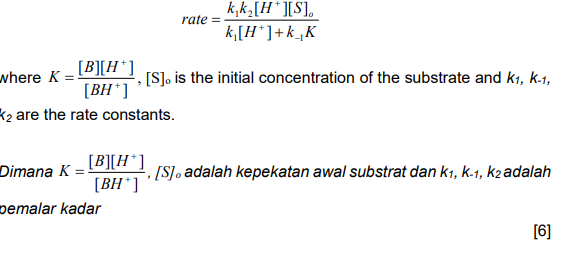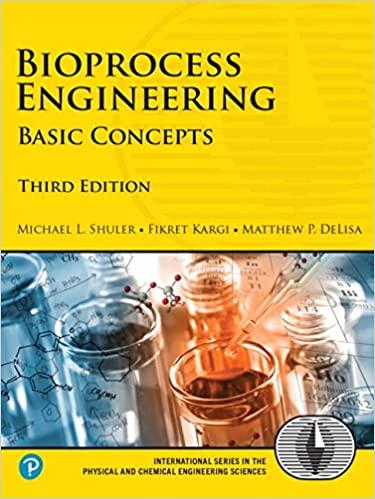Question
a) Acid catalysed reaction may occur through the formation of Vant Hoff or Arrhenius intermediate. A substrate, S(aq) is converted to a product P(aq) through
a) Acid catalysed reaction may occur through the formation of Vant Hoff or Arrhenius intermediate. A substrate, S(aq) is converted to a product P(aq) through a reaction with an acid catalyst, BH+. Write a general mechanism for the reaction and identify intermediates and the conditions for the formation of each of the intermediates. (4marks)
b) By assuming an appropriate condition, from the mechanism in (a) show that the rate equation for a specific acid catalysed reaction is given by the following equation.
where [ ] [ ][ ] + + = BH B H K , [S]o is the initial concentration of the substrate and k1, k-1, k2 are the rate constants
k.kz [H][S). rate = k [H+]+k_K where K =[B][H*] ,[S], is the initial concentration of the substrate and k1, k-1, [BH] K2 are the rate constants. Dimana K =[B][H*] [S). adalah kepekatan awal substrat dan k1, k-1, k2 adalah [BH] pemalar kadar [6]Step by Step Solution
There are 3 Steps involved in it
Step: 1

Get Instant Access to Expert-Tailored Solutions
See step-by-step solutions with expert insights and AI powered tools for academic success
Step: 2

Step: 3

Ace Your Homework with AI
Get the answers you need in no time with our AI-driven, step-by-step assistance
Get Started


